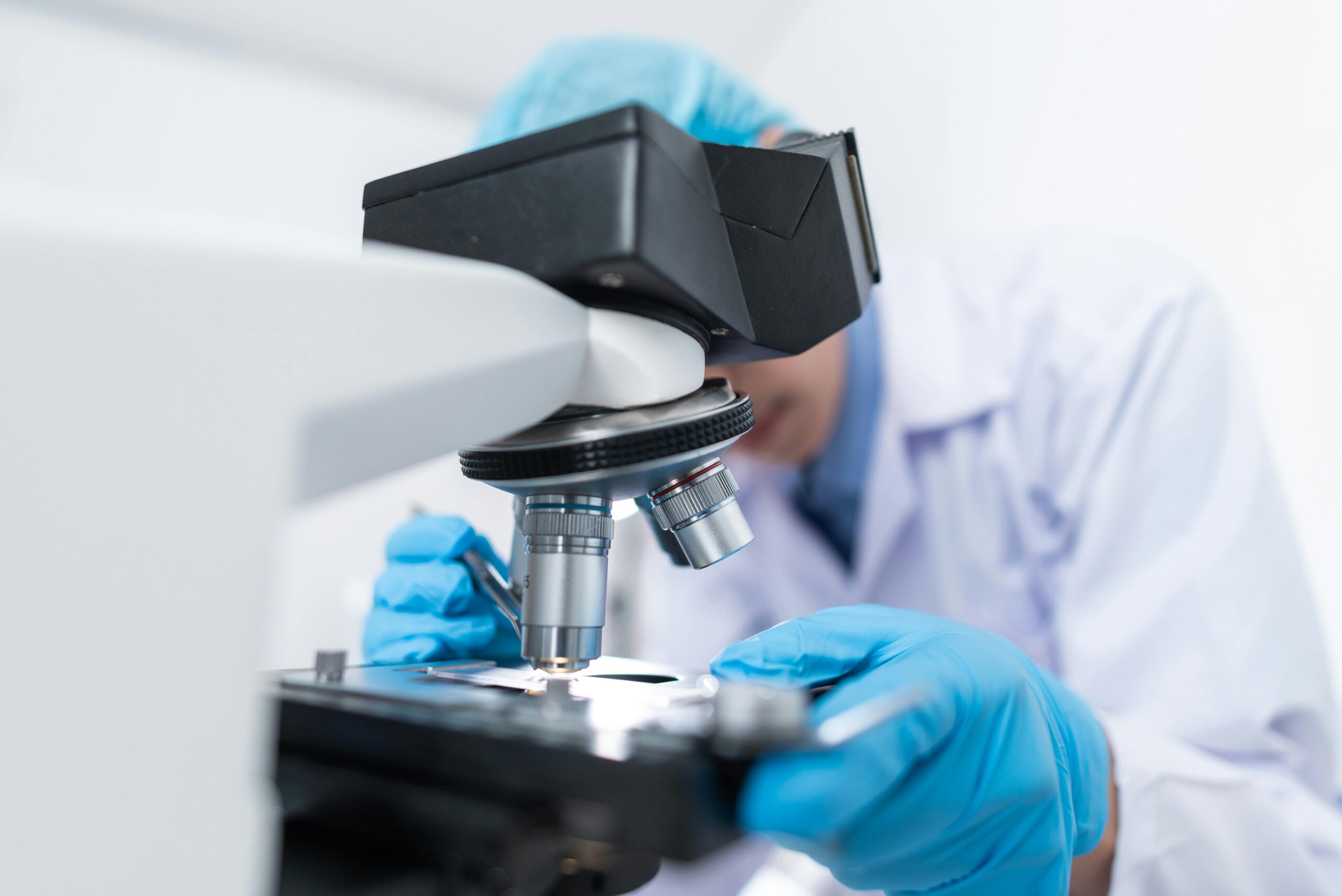The dream of regenerating damaged organs is no longer confined to science fiction. Modern medical research is rapidly transforming this vision into reality, promising revolutionary treatments for millions.
🔬 The Dawn of Regenerative Medicine
Regenerative medicine represents one of the most exciting frontiers in healthcare today. Scientists worldwide are working tirelessly to unlock the secrets of organ regrowth, a breakthrough that could fundamentally change how we treat degenerative diseases, injuries, and organ failure. The potential impact extends far beyond individual patients, promising to reshape entire healthcare systems and dramatically improve quality of life for countless people.
The field combines multiple disciplines including stem cell biology, tissue engineering, biomaterials science, and developmental biology. Each component contributes unique insights into how our bodies can be coaxed into regenerating complex structures that were previously thought permanently lost.
Understanding the Science Behind Organ Regeneration
At its core, organ regeneration relies on understanding how cells communicate, differentiate, and organize themselves into functional tissues. Unlike simple wound healing, true organ regeneration requires recreating complex three-dimensional structures with multiple cell types working in harmony.
Stem cells serve as the foundation for most regenerative approaches. These remarkable cells possess the ability to transform into specialized cell types, offering a biological toolkit for rebuilding damaged tissues. Researchers have identified various stem cell sources, each with distinct advantages for specific applications.
The Role of Stem Cells in Tissue Regeneration
Embryonic stem cells, induced pluripotent stem cells (iPSCs), and adult stem cells each play crucial roles in regenerative medicine strategies. iPSCs have garnered particular attention because they can be generated from a patient’s own cells, eliminating concerns about immune rejection while maintaining the versatility of embryonic stem cells.
These cellular building blocks can be directed to form heart muscle, liver tissue, neurons, and virtually any other cell type in the human body. The challenge lies not in creating individual cells, but in organizing them into functional organs with proper blood supply, nerve connections, and structural integrity.
Current Breakthroughs Reshaping Medical Possibilities 🚀
Recent years have witnessed remarkable progress in organ regeneration research. Scientists have successfully grown miniature organs called organoids in laboratory settings, providing unprecedented opportunities for drug testing and disease modeling. These tiny structures mimic the architecture and function of real organs, offering valuable insights into human development and disease processes.
Bladder regeneration has already transitioned from experimental to clinical reality, with several patients receiving laboratory-grown bladders that function successfully. This achievement demonstrated that complex hollow organs could be engineered and integrated into the human body, paving the way for more ambitious projects.
Liver Regeneration: Nature’s Built-in Blueprint
The liver possesses remarkable natural regenerative capacity, able to regrow to full size from just a fraction of its original mass. Researchers are studying these innate mechanisms to develop therapies for liver disease and failure. Understanding the molecular signals that trigger liver regeneration could unlock similar processes in organs that normally lack this ability.
Scientists have successfully created functional liver tissue in laboratory settings, complete with the metabolic capabilities essential for detoxification and protein synthesis. While a complete laboratory-grown liver for transplantation remains in development, these advances offer hope for treating liver diseases that currently have limited options beyond transplantation.
Heart Tissue Regeneration: Healing the Broken
Cardiovascular disease remains the leading cause of death globally, making heart regeneration research particularly crucial. The adult human heart has minimal regenerative capacity, meaning damage from heart attacks typically results in permanent scarring and reduced function.
Innovative approaches are changing this reality. Researchers have developed cardiac patches containing living heart cells that can be applied directly to damaged heart tissue. These patches help restore contractile function and may prevent the progression to heart failure following cardiac events.
Gene therapy approaches are also showing promise, activating dormant regenerative pathways in heart cells or converting scar tissue into functional heart muscle. Some experimental treatments have demonstrated measurable improvements in heart function in early clinical trials, offering renewed hope for patients with limited options.
Engineering Blood Vessels for Complete Organ Function
No organ can survive without adequate blood supply, making vascularization one of the greatest challenges in regenerative medicine. Scientists are developing sophisticated techniques to create functional blood vessel networks within engineered tissues, using approaches ranging from 3D bioprinting to self-assembling vascular structures.
These advances are critical not only for creating transplantable organs but also for healing wounds and treating conditions where blood flow is compromised. The ability to generate new blood vessels on demand could revolutionize treatment for diabetes complications, peripheral artery disease, and numerous other conditions.
🧬 The Promise of 3D Bioprinting Technology
Three-dimensional bioprinting has emerged as a transformative technology in regenerative medicine. This technique uses specialized printers to deposit living cells layer by layer, creating three-dimensional structures with precise cellular arrangements. The technology combines principles from computer-aided design, engineering, and biology to manufacture tissues with unprecedented control over their composition and architecture.
Bioprinting offers several advantages over traditional tissue engineering approaches. It enables creation of complex geometries that would be difficult or impossible to achieve through other methods, and allows precise positioning of different cell types to recreate the natural organization found in organs.
From Skin to Bones: Practical Applications Today
Bioprinted skin grafts are already being used in clinical settings to treat burn victims and chronic wounds. These grafts can be customized to match patient-specific requirements and may eventually include hair follicles, sweat glands, and other skin structures for more natural healing.
Bone regeneration through bioprinting shows tremendous promise for treating fractures, bone defects, and conditions requiring reconstructive surgery. Bioprinted bone scaffolds can be designed with precise geometry to fit complex defects, and can be loaded with growth factors to promote integration with existing bone tissue.
Nervous System Regeneration: Breaking Old Barriers
The nervous system was long considered beyond the reach of regenerative medicine, with spinal cord injuries and neurodegenerative diseases deemed irreversible. Recent discoveries are challenging these assumptions, revealing that the nervous system possesses more regenerative potential than previously believed.
Researchers have successfully promoted nerve regeneration across spinal cord injuries in animal models, restoring some degree of function. While human applications remain in early stages, these findings offer hope for millions living with paralysis or neurodegenerative conditions.
Brain organoids grown from stem cells are providing new insights into neural development and disease. These miniature brain-like structures display electrical activity and organization resembling actual brain tissue, offering unprecedented opportunities to study neurological conditions and test potential therapies.
Overcoming Immunological Challenges 💪
Immune rejection represents a significant obstacle in organ transplantation and regenerative medicine. Even laboratory-grown organs must be compatible with the recipient’s immune system to avoid rejection and the need for lifelong immunosuppressive medications.
Using a patient’s own cells to create personalized regenerative therapies offers one solution to this challenge. iPSCs derived from patient tissues can theoretically be used to grow replacement organs that are immunologically identical to the recipient, eliminating rejection concerns.
Developing Universal Donor Organs
An alternative approach involves creating universal donor organs that can be transplanted into any recipient without triggering immune rejection. Scientists are exploring various strategies including genetic modification to remove antigenic markers and creating organs from cells that naturally evade immune surveillance.
Some researchers are investigating xenotransplantation—using organs from animals, particularly pigs, which have been genetically modified to be compatible with human recipients. Recent successful experimental transplants of pig kidneys and hearts into human patients represent major milestones toward making this approach viable.
Ethical Considerations in Regenerative Medicine
As with any transformative technology, organ regeneration raises important ethical questions. Issues surrounding stem cell sources, particularly embryonic stem cells, remain contentious in some contexts despite the development of alternative approaches like iPSCs.
Questions about access and equity are equally important. As regenerative therapies transition from experimental to clinical use, ensuring they remain accessible to diverse populations rather than exclusively available to the wealthy will be crucial for maintaining public trust and maximizing societal benefit.
The potential for enhancement beyond restoration also warrants careful consideration. If we can regenerate damaged organs, what ethical boundaries should govern using these technologies to enhance normal function or extend human lifespan beyond natural limits?
📊 The Economic Impact of Regenerative Medicine
The financial implications of successful organ regeneration are staggering. Organ failure and chronic degenerative diseases impose enormous economic burdens on healthcare systems worldwide, consuming significant portions of medical spending in developed nations.
Regenerative therapies could dramatically reduce these costs by addressing underlying causes rather than merely managing symptoms. A one-time regenerative treatment, even if initially expensive, may prove more cost-effective than decades of ongoing care and medications.
| Condition | Current Annual Treatment Cost | Potential Regenerative Solution |
|---|---|---|
| End-Stage Renal Disease | $90,000 – $150,000 | Bioengineered kidney |
| Heart Failure | $30,000 – $100,000 | Cardiac cell therapy |
| Type 1 Diabetes | $15,000 – $30,000 | Pancreatic islet regeneration |
| Liver Cirrhosis | $50,000 – $200,000 | Hepatocyte transplantation |
Clinical Trials and Regulatory Pathways 🏥
Numerous regenerative medicine therapies are currently in various stages of clinical testing. Regulatory agencies worldwide are developing frameworks to evaluate these novel treatments while ensuring patient safety and therapeutic efficacy.
The complexity of regenerative therapies presents unique regulatory challenges. Unlike traditional pharmaceuticals with defined chemical structures, cellular therapies are living products with inherent variability. Regulatory pathways must balance rigorous safety standards with the flexibility needed to accommodate innovative approaches.
Some regenerative therapies have already received regulatory approval for specific applications. Cartilage repair using cultured chondrocytes has been available for years, and additional applications continue to gain approval as clinical evidence accumulates.
The Patient Perspective: Real Stories of Hope
Behind the science and statistics are real people whose lives have been transformed by regenerative medicine. Patients who have received experimental treatments often describe experiences that seem miraculous—regaining function that conventional medicine had deemed permanently lost.
Children born with birth defects have received bioengineered organs that grow with them, eliminating the need for multiple surgeries as they develop. Adults facing organ failure have avoided transplant waiting lists through regenerative interventions that restored their own organs’ function.
These personal stories drive continued research and development, reminding scientists and clinicians that their work has profound human impact beyond academic achievement.
🌟 Future Horizons: What’s Next for Organ Regeneration
The next decade promises accelerating progress in regenerative medicine. Advances in artificial intelligence and machine learning are enhancing our ability to understand complex biological systems and design effective interventions. AI algorithms can analyze vast datasets to identify patterns and predict which approaches will succeed, dramatically accelerating the research process.
Integration of gene editing technologies like CRISPR with regenerative medicine offers powerful new capabilities. Precise genetic modifications can enhance cell function, correct disease-causing mutations, and optimize tissues for specific applications.
Whole Organ Regeneration: The Ultimate Goal
While significant progress has been made with tissues and simplified structures, regenerating complete organs with full functionality remains the holy grail of regenerative medicine. Complex organs like kidneys, with their intricate filtration systems, or lungs, with their delicate gas exchange surfaces, present formidable engineering challenges.
Researchers are pursuing multiple strategies simultaneously. Some focus on building organs from scratch using bioprinting and tissue engineering techniques. Others work to regenerate organs in place by activating dormant regenerative programs or recruiting the body’s own stem cells to damaged areas.
Decellularization approaches offer another promising avenue, using donor organs as biological scaffolds that are stripped of their original cells and repopulated with the recipient’s own cells. This technique preserves the complex structural architecture that makes organs functional while addressing immune compatibility concerns.
Collaborations Driving Innovation Forward
Progress in regenerative medicine requires unprecedented collaboration across disciplines and institutions. Partnerships between academic researchers, biotechnology companies, medical device manufacturers, and clinical practitioners are essential for translating laboratory discoveries into practical therapies.
International collaborations are equally important, as organ regeneration challenges transcend national boundaries. Sharing data, methodologies, and resources accelerates progress and helps ensure discoveries benefit humanity broadly rather than remaining isolated in individual research silos.
Public-private partnerships are proving particularly effective, combining academic innovation with commercial resources and expertise needed to bring therapies to market. These collaborations help bridge the notorious “valley of death” between promising research findings and viable clinical products.
🎯 Preparing Healthcare Systems for the Regenerative Revolution
As regenerative therapies transition from experimental to standard care, healthcare systems must adapt to accommodate these novel treatments. This requires investments in specialized facilities, training for healthcare providers, and development of reimbursement frameworks that recognize the unique value proposition of regenerative medicine.
Medical education must evolve to prepare future physicians, nurses, and other healthcare professionals to work with regenerative therapies. Understanding stem cell biology, tissue engineering principles, and the specific care requirements for patients receiving these treatments will become essential components of medical training.
Healthcare infrastructure will need to support the complex manufacturing processes required for personalized cellular therapies. This may include dedicated Good Manufacturing Practice facilities for cell processing and quality control systems to ensure consistency and safety.
Empowering Patients Through Education and Advocacy
As regenerative medicine advances, patient education becomes increasingly important. Individuals facing conditions that might benefit from regenerative approaches need accurate information to make informed decisions about participation in clinical trials and eventually about choosing between regenerative and conventional treatments.
Patient advocacy groups play crucial roles in supporting research, raising awareness, and ensuring patient perspectives inform the development of regenerative therapies. These organizations help connect patients with clinical trials, provide emotional support, and advocate for policies that promote access to innovative treatments.
Digital platforms and online communities enable patients to share experiences and information, creating valuable resources for others navigating similar health challenges. These peer support networks complement professional medical care and help patients feel less isolated in their journeys.

A Healthier Tomorrow Begins Today 🌅
The revolution in regenerative medicine is not a distant dream but an unfolding reality. Every breakthrough brings us closer to a future where organ failure no longer means inevitable decline, where injuries that once caused permanent disability become temporary setbacks, and where degenerative diseases can be reversed rather than merely managed.
This transformation will require continued investment in research, thoughtful navigation of ethical considerations, and commitment to ensuring these powerful technologies benefit all of humanity. The potential rewards—countless lives saved and improved, reduced healthcare costs, and fundamental shifts in how we approach disease—make this effort one of the most important undertakings of our time.
As we stand at this remarkable inflection point in medical history, the question is no longer whether organ regeneration will transform healthcare, but how quickly we can realize its full potential. With each passing year, what once seemed impossible becomes routine, and new frontiers emerge that challenge our imagination. The future of medicine is being written today in laboratories, clinics, and hospitals worldwide, promising a healthier tomorrow for generations to come.
Toni Santos is a longevity writer and regenerative medicine researcher dedicated to exploring how biology, technology, and ethics can extend healthspan. With a focus on cellular repair and anti-aging biotechnology, Toni examines how next-generation therapies translate lab breakthroughs into real-world vitality. Fascinated by stem cell science, telomere dynamics, and systems biology, Toni’s journey bridges research reviews, expert interviews, and clear public communication. Each article he shares aims to separate evidence from hype—helping readers understand what’s promising, what’s premature, and what truly supports long-term health. Blending molecular biology, clinical insight, and accessible storytelling, Toni investigates interventions that target the root drivers of aging. His work honors responsible innovation—prioritizing safety, transparency, and human wellbeing in the pursuit of extended healthspan. His work is a tribute to: Anti-aging biotechnology grounded in rigorous evidence Cellular rejuvenation pathways that restore function and resilience Stem cell and telomere research advancing ethical longevity care Whether you’re a clinician, researcher, or health enthusiast, Toni Santos invites you to explore the frontiers of regeneration—one discovery, one mechanism, one healthier year at a time.




